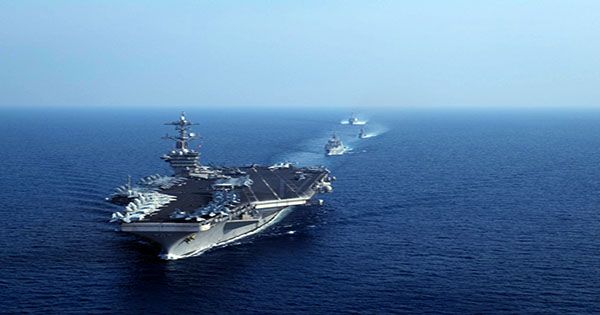Tensions between Moscow and Kiev include huge exercises involving several thousand troops, dozens of ships. Ukraine and the United States will begin a military exercise in more than 30 Black Sea countries and southern Ukraine on Monday, despite Russia’s request to cancel the exercise. Sea air escalated tensions between NATO and Moscow in 2021, which last week said it had fired warning shots at a British warship on the way to the Black Sea off the Crimean coast.
The United Kingdom has denied the allegations in a statement issued Friday stating “Similar, baseless allegations concerning Russia’s intelligence have been made more than once. Russia annexed Crimea in 2014, saying it was part of Russia’s territory, but the peninsula is internationally recognized as part of Ukraine. The Russian embassy in Washington last week called for the cancellation of the drills, and the Russian Defense Ministry said it would respond as needed to protect its own national security.
Sea Wind 2021 will run for two weeks and will involve about 5,000 army members and about 30 ships and 40 aircraft from NATO and other allies. The US missile destroyer USS Ross and the US Marine Corps will take part in it. Ukraine says the main purpose is to gain experience in joint operations during multinational peacekeeping and security activities.
Relations between Kiev and Moscow soured after Russia’s annexation of Crimea and Russia’s support for a separatist uprising in eastern Ukraine. Tensions escalated this year when Russia gathered troops on the Ukrainian border, where some of them are with their group. This document will be displayed as a 95-11 discussion paper by the Center for Science and International Affairs. CSIA negotiation papers are in progress. Comments are welcome and may be directed to the author under the supervision of the Center.
This paper can be cited as: Viktor Zavarski, “Crimea and Black Sea Fleet of Russian-Ukrainian Relations”. CSIA Discussion Paper 95-11, Kennedy School of Government, Harvard University, September 1995. The opinions expressed in this research paper do not imply the views of the authors and the publications CSIA and Harvard University support them. This paper may be reproduced for personal and classroom use. No reproduction is permitted without the written permission of the Center for Science and International Affairs, Publications, J9 JFK Street, Cambridge, MA 02138, Telephone (617) 495-3745 or Telefax (617) 495-8963.
















